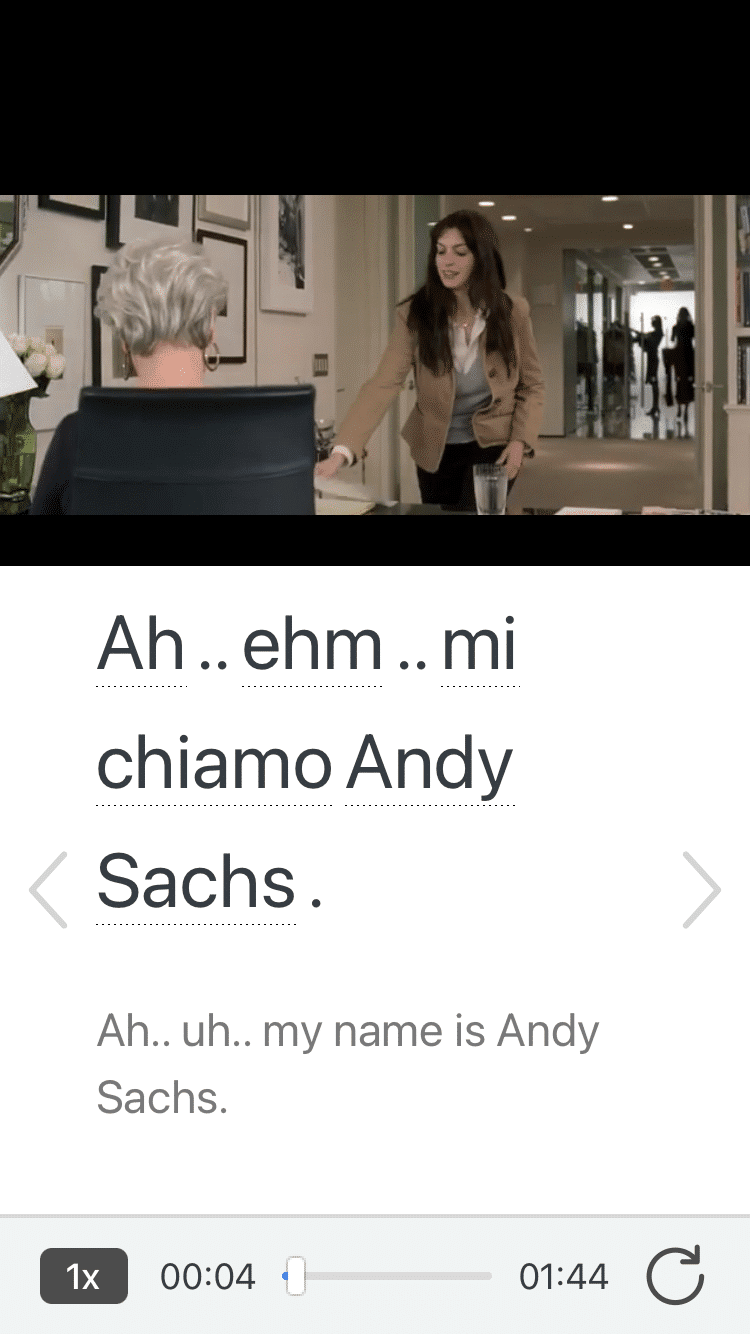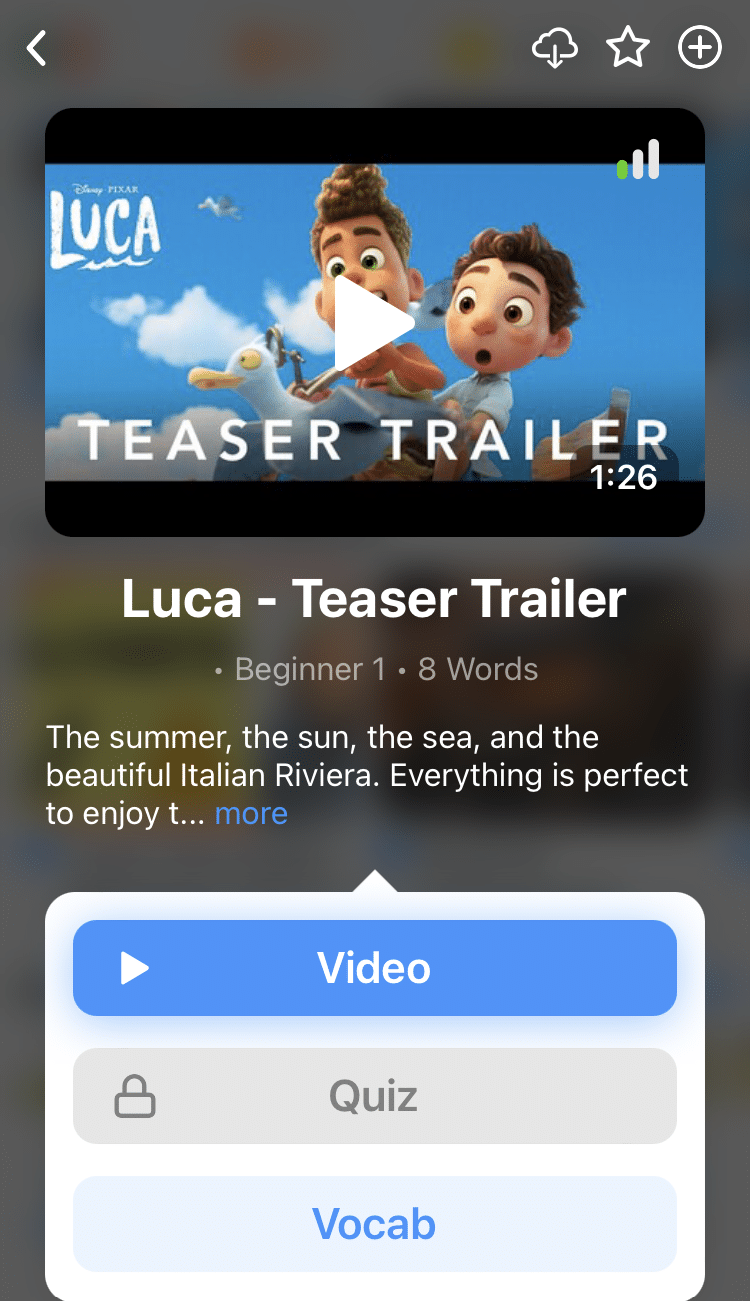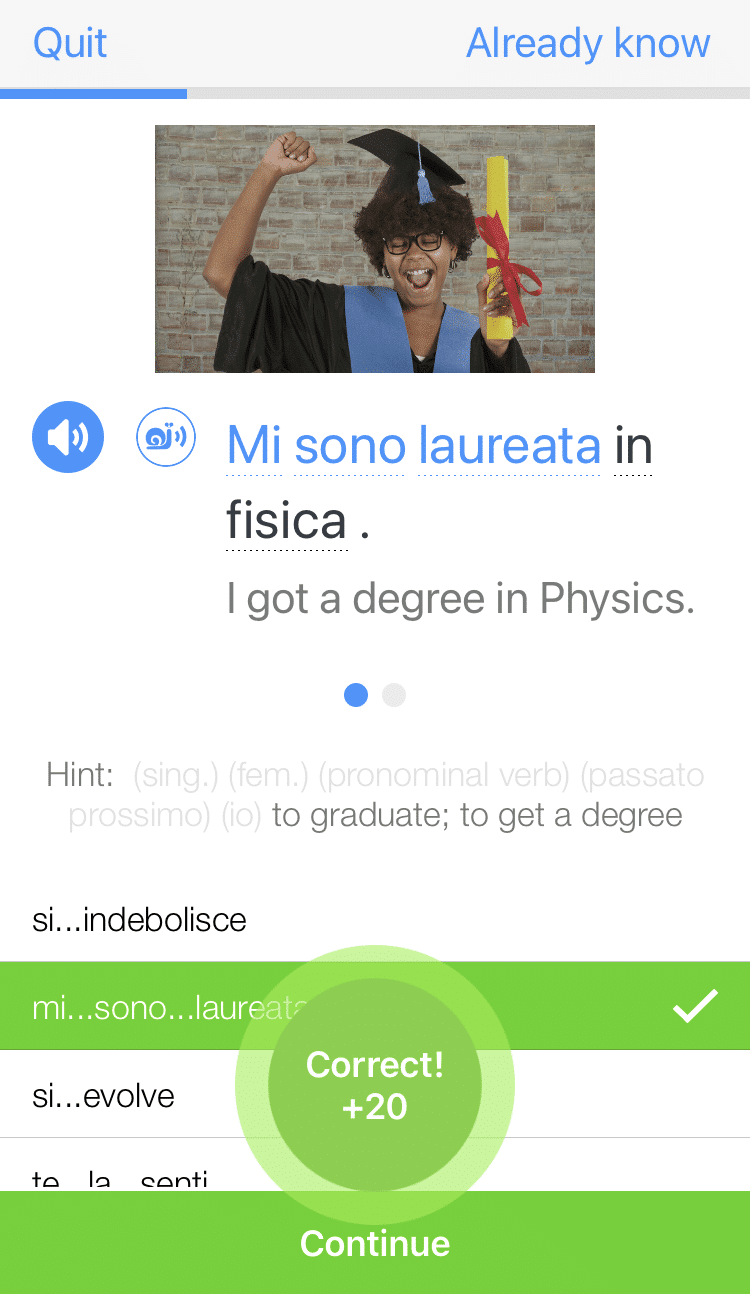
Italian Auxiliary Verbs for Beginners
When you first hear the term “auxiliary verb,” you might think: “Whoa, that sounds complicated!”
But fear not: Odds are, you already know what the Italian auxiliary verbs are.
You just don’t know about them in their context as auxiliaries—yet!
In this post, we’re going to talk about what auxiliary verbs are and how they work in Italian. To contextualize the use of these verbs, we’ll look at some example sentences about a student, Laura, who’s studying abroad in Florence, Italy.
Contents
- What Is an Auxiliary Verb?
- Using Avere in the Past Perfect Tense
- Using Essere in the Past Perfect Tense
- Using the Past Perfect Tense With Reflexive Verbs
- Using Stare in the Present Continuous Tense
- Using Stare in the Past Continuous Tense
- And One More Thing...
Download: This blog post is available as a convenient and portable PDF that you can take anywhere. Click here to get a copy. (Download)
What Is an Auxiliary Verb?
Auxiliary Verbs in English
An auxiliary verb is also known as a “helping verb,” because it helps you know what tense a sentence is in. Auxiliary verbs are paired with other verbs to indicate when something happened or was happening.
We have these in English as well. See if you can spot the difference between these examples:
“I am playing the violin.”
“I have been playing the violin for 12 years.”
“I had been playing the violin for 12 years when I broke my wrist and had to stop.”
Through the use of the helping verbs (highlighted in bold), the sentence changes its meaning completely. The first takes place in the present, the second in the present perfect continuous and the third takes us back in time to the past perfect continuous.
Meet the Italian Auxiliary Verbs: Essere, Avere and Stare
Helping verbs work the same way in Italian. By pairing an auxiliary verb with an action verb, you can change the tense of the sentence.
There are only three auxiliary verbs in Italian. The first two are our good friends essere (to be) and avere (to have). Essere and avere are used as auxiliary verbs when forming the past perfect tense ( passato prossimo ).
The third is a verb you’re probably also familiar with, which is stare (to be, to stand). Stare is a bit different from the other auxiliaries, in that it’s used in the present progressive and past progressive tenses ( passato progressivo ).
When Do We Use Auxiliary Verbs in Italian?
Italian auxiliary verbs are mainly used when you want to talk about something that happened in the past, or discuss an action that is (or was) going on over a period of time.
In Italian, this is done through compound tenses, which need two verbs that form a compound phrase to get your meaning across.
For beginners, it’s important to know how to use the auxiliary verbs in the past perfect and present progressive tenses. For intermediate learners, the past progressive tense is important to know as well.
There are other more advanced tenses (such as the past subjunctive tense) that also take auxiliary verbs. In your Italian learning journey, you’ll encounter auxiliary verbs at all levels.
For the purposes of this post, though, we’ll be introducing the past perfect, present continuous and past continuous tenses.
When Helping Verbs Don’t Act as Helpers
The verbs we’ve introduced don’t always act as auxiliary verbs. When essere and avere are used in the present tense, they’re not acting as auxiliary verbs. For example:
Laura è una studentessa. — Laura is a student.
Laura ha un amico, Giorgio. — Laura has a friend, Giorgio.
In these two sentences, essere and avere act as present tense irregular verbs rather than auxiliaries. So just because you see these verbs doesn’t mean the past perfect tense is close behind!
Using Avere in the Past Perfect Tense
To form the past perfect tense, you need to be familiar with the simple present tense conjugations of essere and avere. You can find the conjugations for both essere and avere on verbi-italiani.
Take look at these sentences:
Laura ha comprato un biglietto online. — Laura bought a ticket online.
Anche Giorgio ha comprato un biglietto online. — Also, Giorgio bought a ticket online.
Loro non hanno dovuto aspettare in fila. — They didn’t have to wait in line.
You’ll notice that each sentence has a present tense conjugation of the verb avere plus the past participle of the second verb to form the past perfect tense. If you aren’t familiar with past participles, you can get a quick refresher over at One World Italiano.
In these sentences, avere is acting as an auxiliary verb. It’s “helping” you know that the sentence is in the past perfect tense.
You might also notice that the compounds don’t translate into English the way you might expect, like “bought” as opposed to “had/has bought.” That’s because, in Italian, you use the passato prossimo to talk about actions that were completed in the past and are still relevant in the present.
To learn more about this compound tense and when to use it, check out a thorough explanation on Mango Languages.
Cultural tip: If you want to drop by the Uffizi Galleries in Florence (and you really should!), you can reserve your ticket online and save yourself the stress of having to wait in miles-long queues to enter the place.
To summarize:
To form the past perfect, you combine the following:
subject + auxiliary verb avere in the present tense + past participle of the verb + rest of sentence
Using Essere in the Past Perfect Tense
For 13 verbs related to motion, you use essere to put them in the past tense.
Let’s say that all the students in Laura and Giorgio’s class are going to the Uffizi Galleries. But since Laura and Giorgio were the only ones who bought tickets online, the other students had to wake up early and wait in line to get theirs.
At around noon, when Laura and Giorgio see their classmates at the museum, they ask the group what they did that morning using avere as an auxiliary:
Che cosa avete fatto questa mattina? — What did you do this morning?
A girl from the group answers:
Noi siamo partiti dal dormitorio alle 8 per andare al museo. — We left the dormitory at 8 to go to the museum.
And a boy pipes up:
E poi, siamo andati al bar per un espresso e un cornetto. — And then we went to the bar for an espresso and a croissant.
Cultural tip: Maybe the boys went to the bar to catch up on the score from last night’s football game! If you see a TV in an Italian bar with sports news on, chances are that bar is frequented by locals. If there’s no TV, you’re probably in an establishment for tourists.
Giorgio then asks the following question:
E quando siete arrivati al museo? — And when did you arrive at the museum?
To which a classmate responds:
Le ragazze sono arrivate alle 9. E i ragazzi sono arrivati alle 9:30. Ma la fila era lunga. Allora, siamo entrati tutti alle 10. — The girls arrived at 9. And the boys arrived at 9:30. But the line was long. So, we all entered at 10.
You’ll notice that, in all these examples, essere is acting as an auxiliary verb. It’s “helping” you know that these sentences are all in the past perfect tense.
To summarize:
Use essere as an auxiliary verb in the past perfect tense with this formula:
subject + auxiliary essere in the present tense + past participle (agreeing in gender and number with the subject) of the verb + rest of sentence
Using the Past Perfect Tense With Reflexive Verbs
Remember that reflexive verbs always take the auxiliary essere in the past perfect tense. To form the simple past tense with reflexive verbs, simply place the pronoun before the auxiliary verb:
C’e molto da vedere al museo. Le ragazze si sono alzate presto. — There’s a lot to see at the museum. The girls woke up early. (feminine plural)
Ma i ragazzi si sono alzati più tardi. — But the boys woke up later. (masculine plural)
To summarize:
If you need to use a reflexive verb in the past perfect tense, don’t despair! Simply use this formula:
subject + reflexive pronoun + auxiliary essere in the present tense + past participle of the verb + rest of sentence
Using Stare in the Present Continuous Tense
Observe how stare is used as an auxiliary verb in these two sentences:
Laura sta scrivendo un SMS a Giorgio. — Laura is writing a text message to Giorgio.
Giorgio sta aspettando un SMS da Laura. — Giorgio is waiting for a text from Laura.
Here, the present tense form of stare is acting as an auxiliary, accompanied by the actual action.
But wait, what’s with these verbs ending in -ando and -endo? That’s called the gerund form of the verb or gerundio . You use the gerund form with the present and past continuous tenses.
To summarize:
The present continuous tense uses stare as an auxiliary verb in this fashion:
subject + auxiliary stare in the present tense + gerund form of the verb + rest of sentence
Using Stare in the Past Continuous Tense
How do you talk about activities that were going on over a period of time in the past? For that, you use the past continuous tense.
Let’s take a look at these sentences:
Stavo guardando “La Nascita di Venere” quando gli altri studenti sono arrivati al museo. — I was looking at “The Birth of Venus” when the other students arrived at the museum.
Laura e Giorgio stavano guardando “La Nascita di Venere” quando gli altri studenti sono arrivati. — Laura and Giorgio were looking at “The Birth of Venus” when the other students arrived.
So what’s going on in these two sentences? The subject is engaged in an activity going on in the past. Then, the subject is interrupted by another action.
In these sentences, the past continuous is used to indicate an action that was going on over a period of time, while the past perfect is used to indicate that the action got interrupted by another action (that wasn’t ongoing).
We also see two auxiliary verbs in the example sentences. Stare (in its imperfect form) is used as an auxiliary for the first part of the sentence, while essere is used as an auxiliary in the second part. You can also use avere in the same way. For example:
Noi stavamo guardando “L’Annunciazione” di Da Vinci quando Giorgio ha detto «Che bel dipinto!». — We were looking at “The Annunciation” of Da Vinci when Giorgio said: “What a beautiful painting!”
Here’s a recap of stare in its past imperfect form to make it easier to build this tense:
Io stavo (I was)
Tu stavi (You were) — singular
Lui stava (He was)
Lei stava (She was)
Noi stavamo (We were)
Voi stavate (You were) — plural
Essi stavano (They were)
Here’s a more in-depth article on how to use stare in general.
To summarize:
The past continuous tense uses stare as an auxiliary in its past imperfect form along with a gerund. Here’s the formula:
subject + auxiliary stare in the past imperfect form + gerund form of the verb + rest of sentence
Avere, essere and stare make up the bedrock of the Italian language. Often, when beginners learn Italian, they learn how to use the past and continuous tenses without really thinking about all the ways that avere, essere and stare “help out.”
You may also not have thought much about the role these words play as helpers. By drawing attention to these verbs as auxiliaries, you should be able to better understand how they give meaning to sentences.
And if you want to see more examples of these verbs in action, head over to the language learning platform FluentU.
FluentU takes authentic videos—like music videos, movie trailers, news and inspiring talks—and turns them into personalized language learning lessons.
You can try FluentU for free for 2 weeks. Check out the website or download the iOS app or Android app.
P.S. Click here to take advantage of our current sale! (Expires at the end of this month.)
Download: This blog post is available as a convenient and portable PDF that you can take anywhere. Click here to get a copy. (Download)
And One More Thing...
If you're as busy as most of us, you don't always have time for lengthy language lessons. The solution? FluentU!
Learn Italian with funny commericals, documentary excerpts and web series, as you can see here:

FluentU helps you get comfortable with everyday Italian by combining all the benefits of complete immersion and native-level conversations with interactive subtitles. Tap on any word to instantly see an image, in-context definition, example sentences and other videos in which the word is used.

Access a complete interactive transcript of every video under the Dialogue tab, and review words and phrases with convenient audio clips under Vocab.

Once you've watched a video, you can use FluentU's quizzes to actively practice all the vocabulary in that video. Swipe left or right to see more examples of the word you’re on.

FluentU will even keep track of all the Italian words you’re learning, and give you extra practice with difficult words. Plus, it'll tell you exactly when it's time for review. Now that's a 100% personalized experience!
The best part? You can try FluentU for free with a trial.
Start using the FluentU website on your computer or tablet or, better yet, download the FluentU app from the iTunes or Google Play store. Click here to take advantage of our current sale! (Expires at the end of this month.)






